Essential gear for sports photography
Canon sports photographer Eddie Keogh on the kit you need to capture the action – whether that’s from the sideline at the Rugby World Cup or your local park…
The way Eddie Keogh describes it, being a photographer of international rugby is a bit like being the manager of one of the teams. You have to have a very good idea of what the players are going to do.
"The ball goes into the scrum, and you think that the number eight wants to shift it quickly to the scrum half," he says. "At the same time, they're trying to disguise it. To get a great shot, you have to look at the subtle movements and try to anticipate the way the play will build."
In other words, great sports photographers need a kind of sixth sense, developed over years of studying the game. And when the decisive moment arrives, they need the right equipment to capture it with, whether the killer pass is played during the Rugby World Cup final or a junior game on a local club.
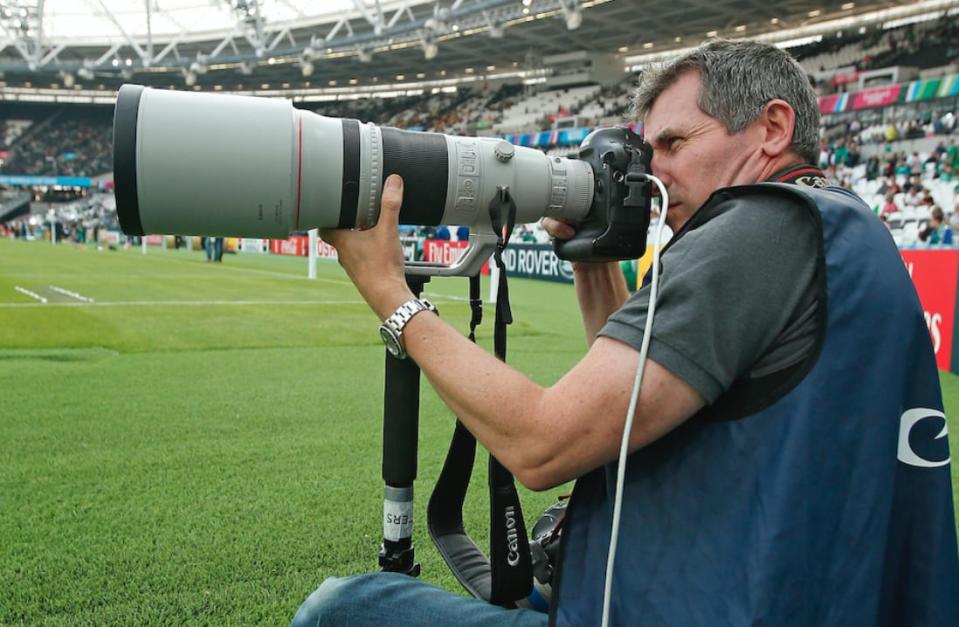
© Eddie Keogh
Eddie says that you don't need to spend thousands on kit to take great sports pictures, but some good basic equipment is a must. Then you can gradually add to your kit bag over time when your budget allows. Here's his pick of the essentials...
If in doubt, go short
If you're starting out, a fixed lens compact camera like the Canon PowerShot SX70 HS (pictured below) is a great camera for snapping the local Sunday League team. But as you get more serious, you'll want to upgrade to a true DSLR – such as the Canon EOS 7D Mark II – so you can choose the best Canon lenses for the pictures you want to take.
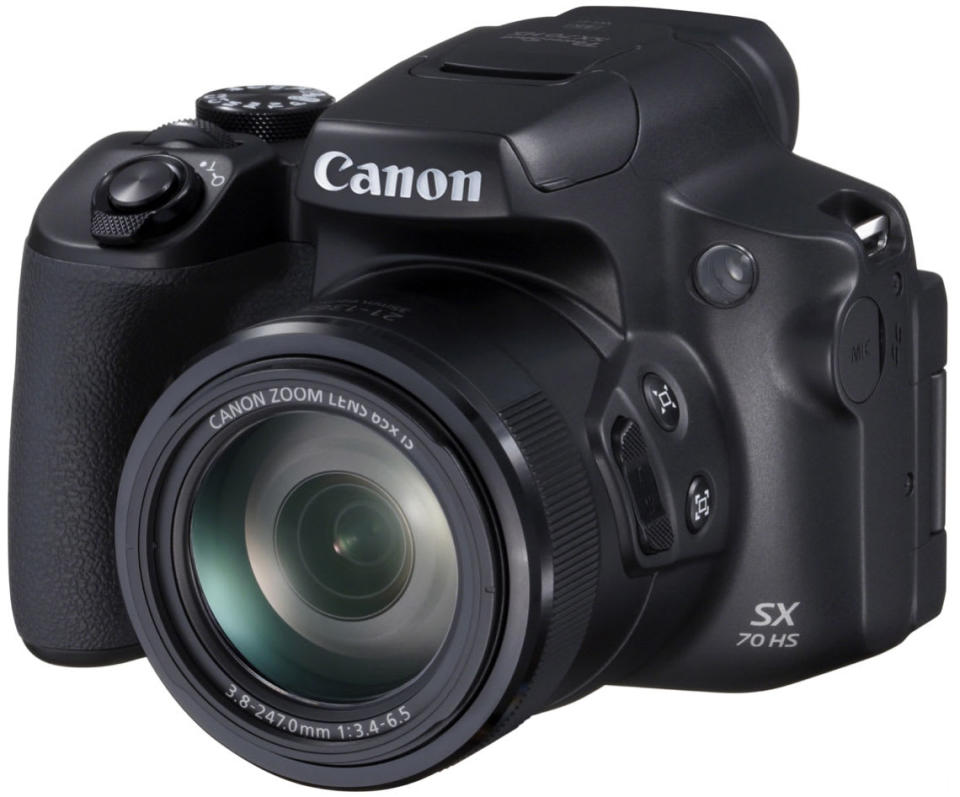
© Canon
"You can shoot good sports photographs with a short lens, so don't feel you have to rush out and buy a long lens for shooting your local juniors," says Eddie. A high quality 50mm lens like the Canon 50mm f/1.8 is great, but you'll need to get close to the action. Position yourself next to the goal as the corner comes over, or in the corner where a try is likely to be scored.
A great all rounder
Most amateur photographers will be taking more than just sports pictures, so if you want a telephoto lens that covers all bases, the Canon EF 70-200mm f/2.8L IS II USM (pictured below) is it. "It's a perfect all rounder," says Eddie. "I carry a 70-200 round my neck to cover tries scored in the corner where I'm sitting, with a longer lens for tries scored in the other corner. If you're going to spend money on just one telephoto lens, make it this one."
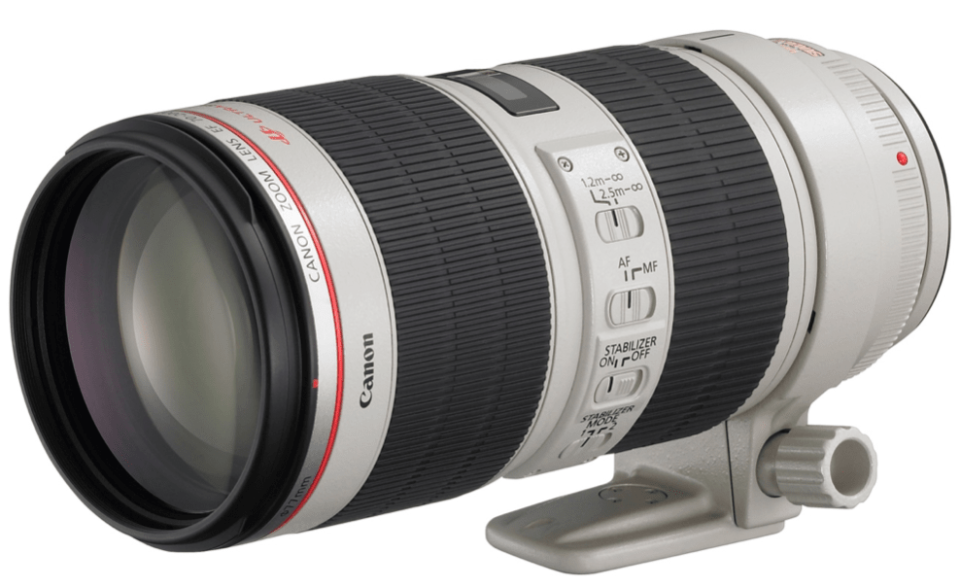
© Canon
As you progress
If your hobby turns into a serious passion, Eddie says the Canon EF 300mm f/2.8L IS II USM is on the border between general use and more specialised sports photography. The 300mm is a serious piece of kit, a super-telephoto lens ideal for action photography. "With this lens there's no fuzziness or competing colours. The depth of focus becomes very small so you're left with a very sharp, clean foreground image, with the background dropping away so it doesn't draw your attention," says Eddie.
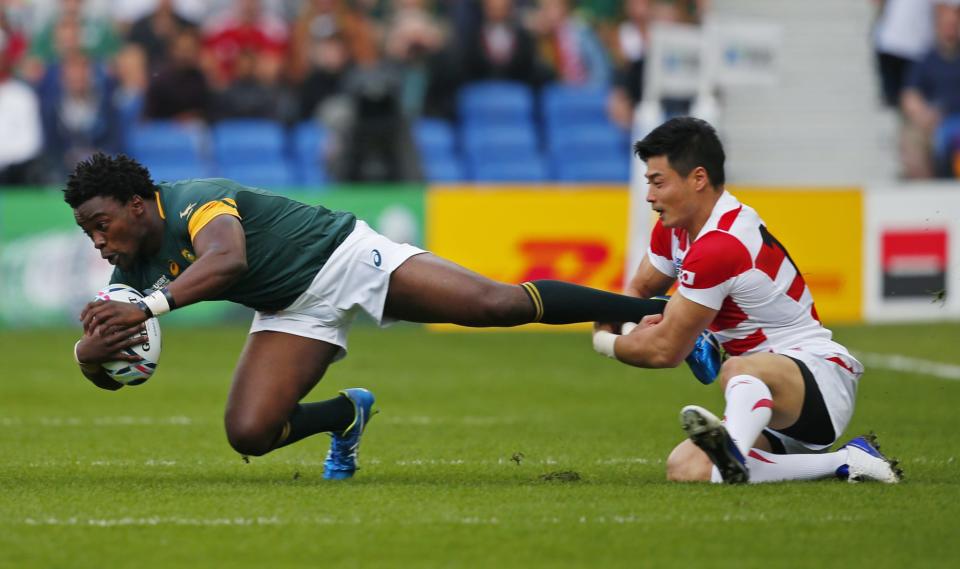
© Eddie Keogh
Eddie also uses 400mm or 500mm long lenses, but these professional lenses are targeted at the most serious sports and action photographers. "Whatever you go for I'd recommend Canon," he says. "In my opinion they are the best lenses in the business."
Other kit
It's easy to get caught up in the technical details of cameras and lenses, but a sports photographer needs more basic equipment too.
"You need something to sit on, because you have to be there for the entire game to make sure you catch the decisive moment," says Eddie. Professionals have specialised seats that concertina into different shapes, allowing them to take pictures from different heights. But for amateurs an upturned equipment case is fine.
"The other things I always have with me are a travel towel to wipe rain from the lens, lens hoods, memory cards with enough data, and spare batteries that I've charged the night before. There's nothing worse than running out of juice in the middle of a game," says Eddie.
Your lucky scarf / pants / rabbit's foot etc...
If you can remember to bring along a slice of luck, so much the better. One of Eddie's most iconic pictures was taken at the last Rugby World Cup, when the minnows of Japan came up against the giants of South Africa in what turned out to be a classic David v Goliath encounter.
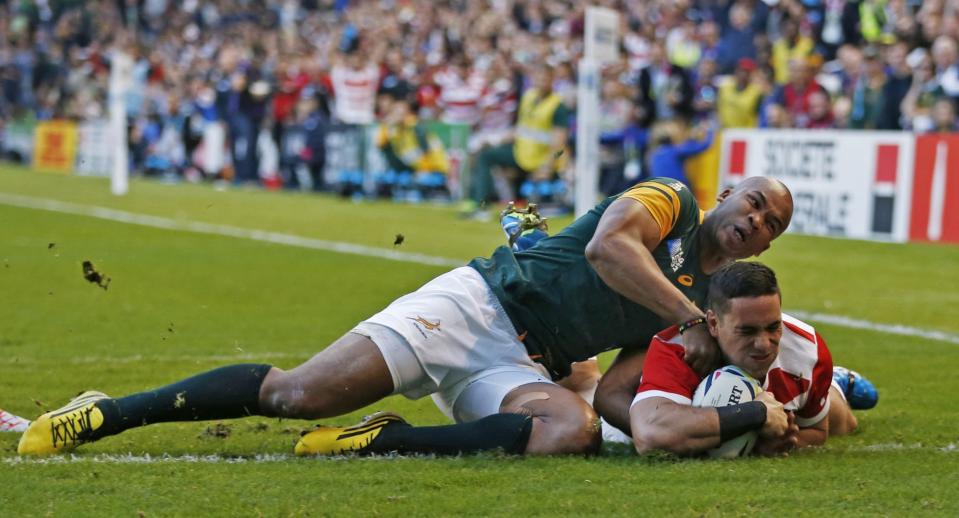
© Eddie Keogh
"There were two of us from Reuters, and the deal is that you each take an end and stay there for the whole game. In the second half I was at the end South Africa were defending, so I didn't expect to see much action.
"And for most of the half I didn't. But always expect the unexpected in sport. In the last minute Japan broke away to score the try that caused one of the greatest upsets in World Cup history, right in my corner. So bring along the best equipment you can and keep concentrating. Then maybe you'll just get lucky."
The most defining moments in Rugby World Cup history have been taken on Canon. Discover Canon rugby kit recommendations which have everything you need to capture your own personal sporting stories and historic moments.
